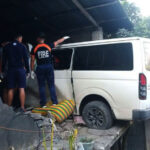The Cement build by the Japanese soldiers to cover their buried treasure are not just a mixture of cement, gravel, sand and water during occupation in the Philippines at the time of World War II. Perhaps the most hardened cement that one can ever imagine. It proves that you can compare the hardness and endurance to iron steel through the presence of affirmative evidence.
It is said that enormous amount of silica quartz and pyrites mixed together with unknown amount of hardener and resin adhesive, based on extensive research and study.
The thickness of a concrete slab that serve as the mortar seal of the treasure cache in 0.05-5 meters depending on the volume of the treasures buried. The bigger the volume, the deeper the treasures buried. There are major and minor sites. Major sites could reach up to 8 meters from the ground surface of 20-30 meters deep. A series of rectangular chambers are built to free from collapsing down below.
Moving forward, the only faster way to break the seal open is by the use of a burning rod but it is useless if the area is watery or the use of a powerful sedatives that make the cement soft and easy to break with the use of chisel. However, there are still some people who are successful and luck enough in retrieving the cache after years of painstaking effort.









after digging the hard surface or concert, we have found sand. After the sand what is the next we have found. the raw of gold or another concret.
Do you have any idea on how to remove carbon from dust gold? or how to clean carbonized dust gold
I’m into the hard stuff in Luzon.
Sledges going.
Ideas on best way thru? We’re 15 meters down and in a manmade tunnel. Lots of signs.